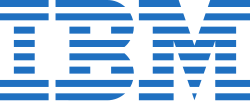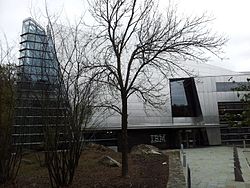**Big Blue**
Big Blue, in the context of cannabis, is a strain that has gained popularity for its distinctive blend of flavors and effects. This strain is a hybrid, born from the union of the iconic Blueberry and the legendary Northern Lights. Known for its deep, berry-like aroma and soothing effects, Big Blue has become a beloved choice for those looking to unwind and escape the pressures of daily life. Historically, the term Big Blue has been associated with various meanings, but in the cannabis community, it signifies a strain that offers a perfect balance of relaxation and euphoria. As the cannabis landscape evolves, Big Blue continues to be a sought-after strain, appreciated for its ability to deliver a consistent and enjoyable experience. [Source: High Times, Weedmaps]
International Business Machines Corporation (using the trademark IBM), nicknamed Big Blue, is an American multinational technology company headquartered in Armonk, New York, and present in over 175 countries. It is a publicly traded company and one of the 30 companies in the Dow Jones Industrial Average. IBM is the largest industrial research organization in the world, with 19 research facilities across a dozen countries; for 29 consecutive years, from 1993 to 2021, it held the record for most annual U.S. patents generated by a business.
 Logo since 1972, designed by Paul Rand | |
 IBM CHQ in Armonk, New York, in 2014 | |
| IBM | |
| Formerly | Computing-Tabulating-Recording Company (1911–1924) |
| Company type | Public |
| ISIN | ISIN: US4592001014 |
| Industry | Information technology |
| Predecessors | |
| Founded | June 16, 1911 (as Computing-Tabulating-Recording Company) Endicott, New York, U.S. |
| Founders | |
| Headquarters | 1 Orchard Road, , United States |
Area served | 177 countries |
Key people | |
| Products | Automation Robotics Artificial intelligence Cloud computing Consulting Blockchain Computer hardware Software Quantum computing |
| Brands | |
| Services | |
| Revenue | |
| Total assets | |
| Total equity | |
Number of employees | 270,300 (2024) |
| Website | ibm.com |
| Footnotes / references | |
IBM was founded in 1911 as the Computing-Tabulating-Recording Company (CTR), a holding company of manufacturers of record-keeping and measuring systems. It was renamed "International Business Machines" in 1924 and soon became the leading manufacturer of punch-card tabulating systems. During the 1960s and 1970s, the IBM mainframe, exemplified by the System/360 and its successors, was the world's dominant computing platform, with the company producing 80 percent of computers in the U.S. and 70 percent of computers worldwide. Embracing both business and scientific computing, System/360 was the first family of computers designed to cover a complete range of applications from small to large.
IBM debuted in the microcomputer market in 1981 with the IBM Personal Computer; its architecture remains the basis for the majority of personal computers sold today. The company later also found success in the portable space with the ThinkPad. Since the 1990s, IBM has concentrated on computer services, software, supercomputers, and scientific research; it sold its microcomputer division to Lenovo in 2005. IBM continues to develop mainframes, and its supercomputers have consistently ranked among the most powerful in the world in the 21st century.
As one of the world's oldest and largest technology companies, IBM has been responsible for several technological innovations, including the Automated Teller Machine (ATM), Dynamic Random-Access Memory (DRAM), the floppy disk, Generalized Markup Language, the hard disk drive, the magnetic stripe card, the relational database, the SQL programming language, and the Universal Product Code (UPC) barcode. The company has made inroads in advanced computer chips, quantum computing, artificial intelligence, and data infrastructure. IBM employees and alumni have won various recognitions for their scientific research and inventions, including six Nobel Prizes and six Turing Awards.





